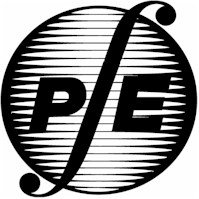 Idaho
Society of Professional Engineers
Idaho
Society of Professional Engineers
PO Box 170239, Boise, ID 83717-0239 208-426-0636 Fax: 208-426-0639 E-Mail: ispe@idahospe.org
|
PO Box 170239, Boise, ID 83717-0239 208-426-0636 Fax: 208-426-0639 E-Mail: ispe@idahospe.org |
|
|
|
|
Idaho Society of
Professional Engineers
ISPE SINCERELY APPRECIATES THE SUPPORT OF ALL OF OUR CURRENT 2008 - 2009 SUSTAINING ORGANIZATIONS: AHJ Engineers PC B & A Engineers, Inc Briggs Engineering, Inc Elkhorn Engineers G & S Structural Engineers J.M. Miller Engineering Inc J-U-B Engineers, Inc Land Solutions, Land Surveying & Consulting Mason & Stanfield Inc Materials Testing & Inspection Inc MWH Progressive Engineering Group Inc Quadrant Consulting, Inc Riedesel Engineering Inc Schiess & Associates Smarter Process Inc Stapley Engineering Terracon TerraGraphics Environmental Engineers Inc Walker Engineering
Please consider joining these great companies in
becoming an
ISPE Sustaining Organization. ISPE offers the Sustaining
Organization category of membership to enhance the visibility of your commitment
to ISPE and the engineering profession. Your membership will allow us to better
serve the engineering community through promoting engineering and ethics, and
supporting the needs of the engineer including professional development.
Spring Planting The figure below shows the shape of Grant’s garden. The number of items planted along some of the horizontal and vertical sides is given. Each potato requires an area 6 inches by 6 inches and each bean an area 4 inches by 4 inches for each seed that is planted. If he does not intend to leave any extra space between “rows” what is the area of the garden Grant is planting, in sq feet? Express your answer as a decimal to the nearest tenth.
---------------------------------------------------------------------------- Jane has a bag containing a mix of seeds for purple flowers, yellow flowers and orange flowers in the ratio of 1:1:2, respectively. There is a total of 16 seeds in the bag. Jane randomly sprinkles 3 seeds in a garden. If each of the seeds sprinkled successfully produces 1 flower, what is the probability that there are 2 purple flowers and 1 yellow flower produced? Express your answer as a common fraction. ----------------------------------------------------------------------------- Helen and Howard are planting flowers along the front and side of their porch, as shown in the figure. The porch measures 3 feet by 10 feet. The flowers they have chosen need 6 inches of space between each seed. If they want to plant the flowers 1 foot from the porch and starting 6 inches from the walkway, how many total flowers can they fit around the two edges of the porch?
Answer to the last MATHCOUNTS problem:
From 2009 to 2029, we know 20 years will pass. That means that
from 2009 to 2029 Group A’s population will double 20/5 = 4 times, while Group
B’s population will double 20/4 = 5 times. -----------------------------------------------------------------------------
Since Group A’s population doubles every 5 years, we can say that
in x years the groups population will be 200(2x/5). We can also say
that in x years Group B’s population will be 25(2x/4). Because we
want to see when the two populations will be equal we will set the equations
equal to each other and solve for x. -----------------------------------------------------------------------------
From 2009 to 2109 100 years will pass. That means that from 2009
to 2109 Group A’s population will double 100/5 = 20 times, while Group B’s
population will double 100/4 = 25 times.
If you want to see the problem again, click https://mathcounts.org/Page.aspx?pid=1422
|
National Engineers Week - Future City Competition
Board of Professional Engineers and Professional Land Surveyors
|
Send mail to ispe@idahospe.org with
questions or comments about this web site.
|